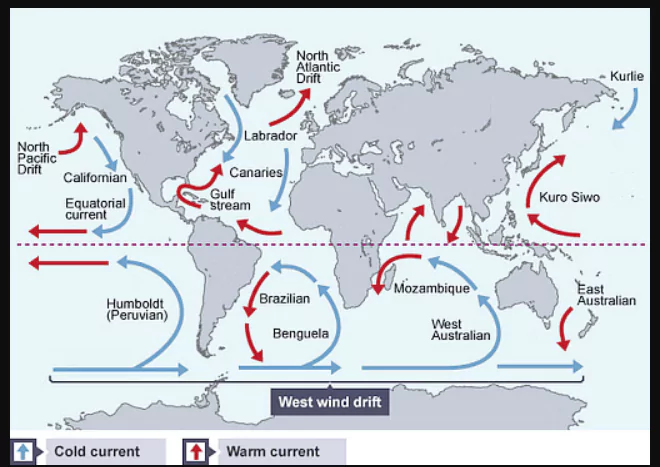![]() May 1, 2024
May 1, 2024
![]() 12644
12644
![]() 0
0
Ocean currents are like large masses of water flowing constantly in regular patterns on the ocean surface in definite directions. They’re driven by various forces like winds, temperature, and even the Earth’s rotation. These currents play a crucial role in shaping Earth’s climate, influencing everything from temperature patterns to marine life habitats. Understanding them helps us grasp the complex dynamics of our planet’s oceans.

| Eastward flow of equatorial counter-current: Trade winds push the water towards the west but land masses on the west obstruct the flow. A gradient develops there and water starts moving towards the east under its influence as the influence of winds is not significant due to the presence of doldrums.[UPSC 2015] |
| Warm Current | Cold Current |
|
|

| Must Read | |
| Current Affairs | Editorial Analysis |
| Upsc Notes | Upsc Blogs |
| NCERT Notes | Free Main Answer Writing |
| Related Articles | |
| Friction: Dual Forces shaping everyday Life, Efficiency and Design | ENVIRONMENT |
| ocean currents | Indian Geography: Location and Overview |
<div class="new-fform">
</div>
Latest Comments